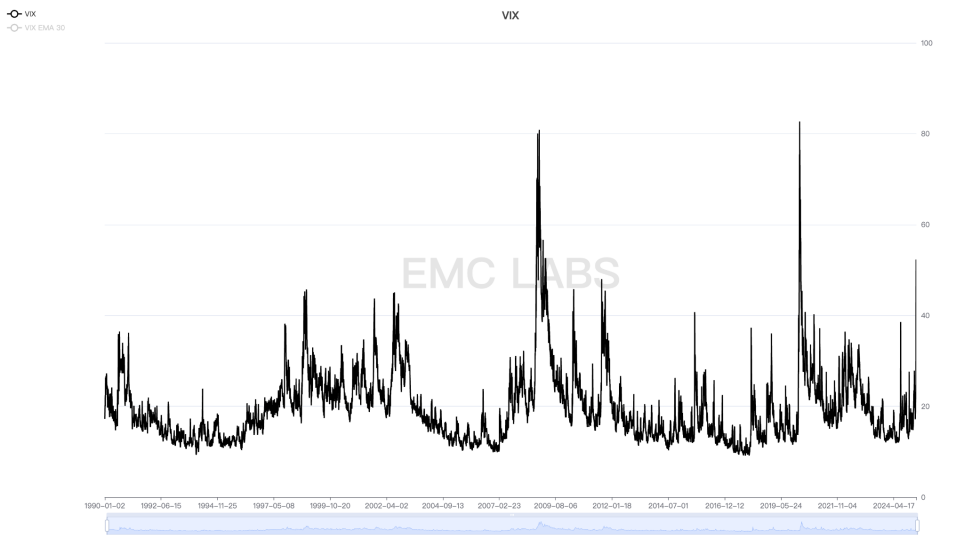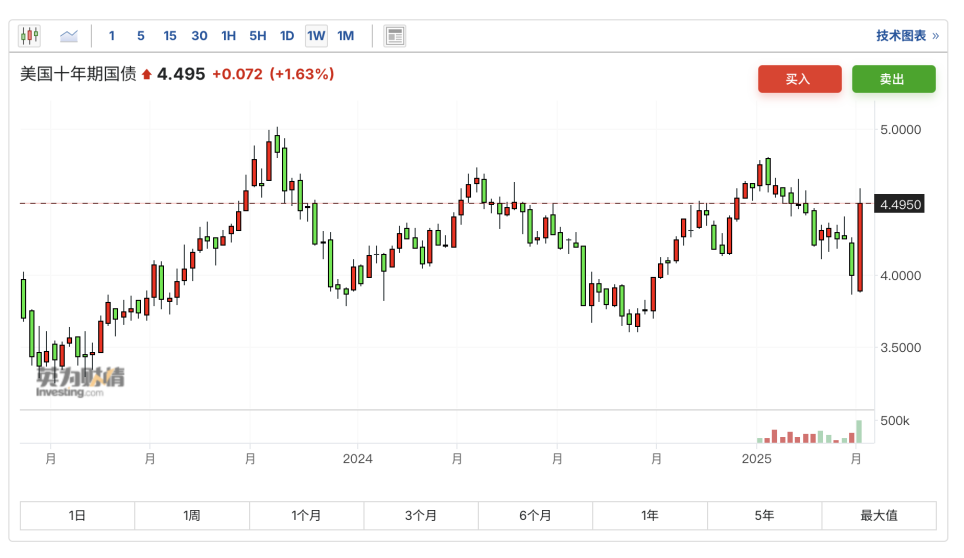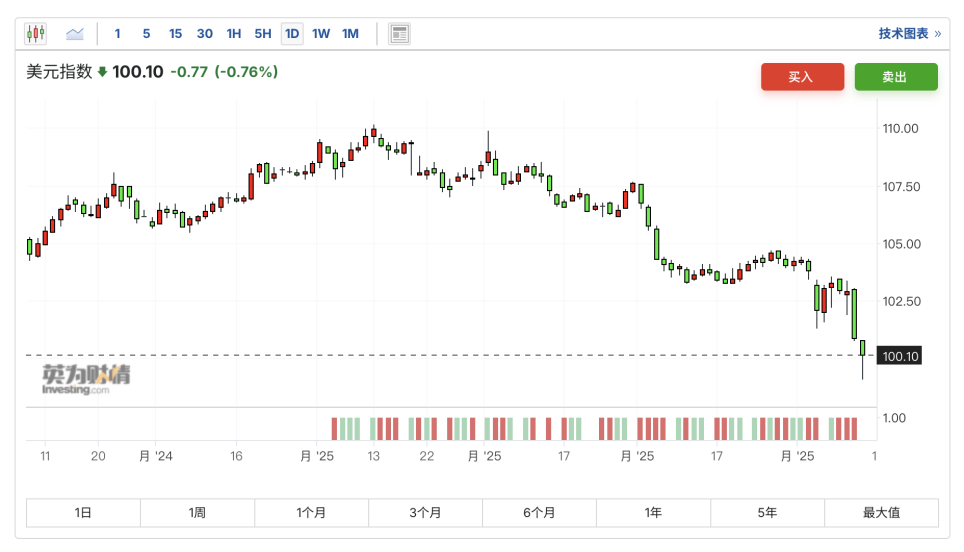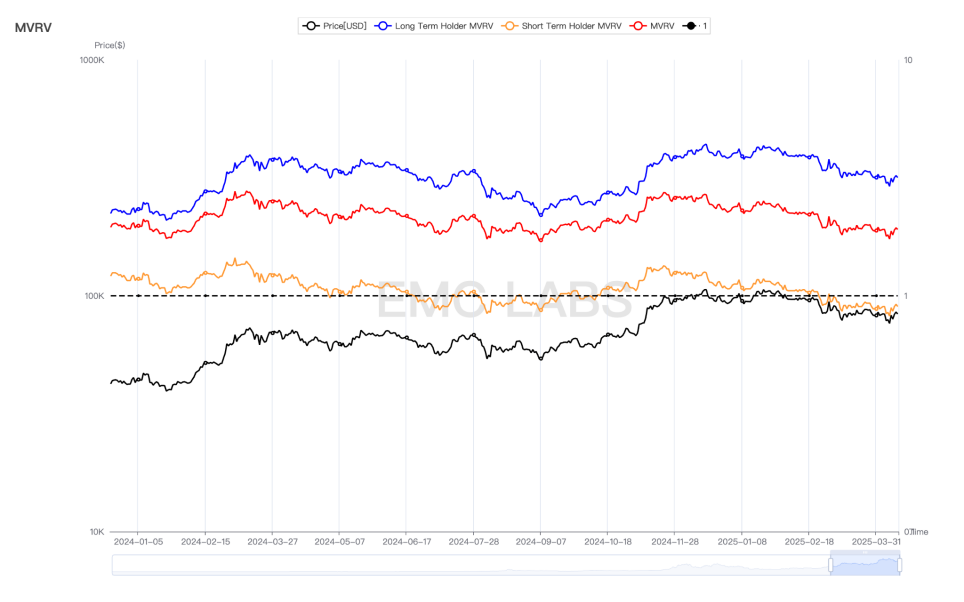Written by: 0xWeilan
This week, BTC opened at $78,370.15 and closed at $84,733.07, rising 6.84% for the week with a volatility of 14.89%, and trading volume continued to expand significantly. Since late January, BTC price has effectively broken through the upper limit of the downward channel for the first time, approaching the 200-day moving average.
Trump's "reciprocal tariff war" remained the largest variable in global macroeconomic finance this week. Its dramatic performance left the world stunned, with China's countermeasures striking back with the strongest response.
In the "game of chicken," the one who blinks first is most likely to lose. The global tariff war against the world triggered both explicit and implicit reactive forces from global powers, including but not limited to political, commercial, and capital levels.
Ultimately, this led to capital fleeing the US market, resulting in a rare "stocks, bonds, and exchange" triple kill in the United States.
Facing a massive financial crisis, the Trump administration chose to compromise, either partially postponing the implementation of reciprocal tariffs or reducing intensity by supplementing exemption commodity lists, and releasing goodwill to China, its biggest opponent, in the public opinion sphere. From this point, the "reciprocal tariff war" gradually entered its second phase, with multiple parties set to negotiate and compromise.
The risk equity market, previously hit by the first phase, now ushered in a significant rebound. Perhaps the most terrible phase triggered by the "reciprocal tariff war" has passed, but subsequent chaos will continue to dominate various markets. The reciprocal tariff crisis will neither easily pass nor easily avoid triggering new crises. Whether subsequent "reciprocal tariffs" will escalate conflicts, whether the Federal Reserve will "timely" cut interest rates, and whether the US economy will fall into recession have become the main points of observation.
Policies, Macroeconomic Finance, and Economic Data
Because most countries are unable to counter the "reciprocal tariffs", China and the EU's countermeasures have become the main force resisting US hegemony, with China being the mainstay in this head-to-head confrontation.
After several rounds of confrontation, the US has raised tariffs on China to 145%, while China's retaliatory tariffs on the US have increased to 125%. This has essentially eliminated the possibility of normal trade relations, so China subsequently announced that it would no longer respond to potential further US tariff increases.
On April 10, the US suspended reciprocal tariffs on most countries (excluding China), maintaining a 10% "baseline tariff" and initiating negotiations. US stocks surged as a result, with Nasdaq experiencing its second-largest single-day increase in history.
China's seemingly passive actions actually put enormous pressure on the US. On the 12th, the US exempted some Chinese goods from the 145% "reciprocal tariffs", including smartphones, tablets, laptops, semiconductors, integrated circuits, flash memory, and display modules.
The true driver pushing the Trump administration into the "second phase" was not just China's countermeasures, but also the strong "opposition" from US political and commercial circles, as well as stock, bond, and foreign exchange markets.
On Monday, April 7, the three major US stock indices all plummeted, reaching adjustment lows and entering or approaching technical bear markets. The next day, the VIX panic index reached a high of 52.33, the third peak since the 2008 subprime debt crisis and the 2020 COVID-19 pandemic crisis.

S&P 500 VIX Index
During the same period, short-term Treasury yields fell to 3.8310% on Thursday, while long-term Treasury yields rebounded sharply on Friday, closing at a high of 4.4950%.

US 10-Year Treasury Yield
After a massive sell-off in US stocks, US bond funds also joined the sell-off, and with additional capital fleeing the US for Europe and other regions, the US Dollar Index (DXY) also experienced a significant decline.

US Dollar Index
The "triple kill" of stocks, bonds, and exchange rates forced the Trump administration to release signals of tariff war relaxation and publish an exemption list. Simultaneously, the Federal Reserve also released "dovish" signals. Boston Fed President Collins told the Financial Times in an interview on Friday that the Fed is "absolutely prepared" to use various tools to stabilize financial markets if necessary.
The tariff war's easing and the Fed's verbal market rescue temporarily calmed US financial markets. On Friday, the three major US indices all ended the volatile week with gains.
EMC Labs judges that as the US reciprocal tariff war enters its second phase, market fear has somewhat subsided and is gradually beginning to bottom out. However, based on the Trump administration's "irrationality" and the massive risks of US economic recession and inflation (the University of Michigan's consumer confidence index continued to fall to 50.8 this week), a V-shaped reversal is a low-probability event.
Selling Pressure and Sell-offs
This week, selling pressure on both short and long-term chains slightly weakened, somewhat stopping the panic selling of the past three weeks. The total on-chain selling volume for the week was 188,816.61 coins, with 178,263.27 from short-term holders and 10,553.34 from long-term holders. On the 7th and 9th, short-term groups again experienced significant losses in the global market panic.
Currently, long-term holders are still playing a stabilizing role, increasing holdings by nearly 60,000 coins this week, indicating that market liquidity remains quite scarce. By the end of the week, short-term groups were still at a 10% floating loss, indicating that the market continues to face enormous pressure.

Floating Profit and Loss Across the Entire Market
Cycle Indicators
According to eMerge Engine, the EMC BTC Cycle Metrics indicator is 0.125, with the market in an upward continuation period.







